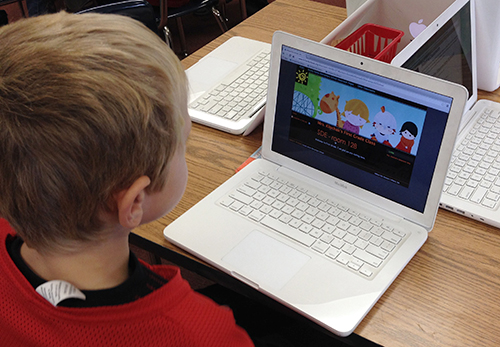Chapter 6: Supporting Diverse Learners
6.5 Next Steps

There were many moments when our share time felt messy and muddled but it turned out that it was more productive than unproductive. I realized that our whole group share time propelled a lot of things, such as: students writing more about books, students flexibly using tools to share their thinking, and students being held more accountable. I would hold the students accountable for their learning but they started to hold each other more accountable. Students’ comments to each other would push them to put more effort in their work. For example, Rana shared her thoughts about the book titled Chopsticks by Amy Krouse Rosenthal using the iPad. The students were listening as she recounted important events from the book and then she ended the piece by telling what she thought the theme of the book was. Before I could say a word Tempa immediately said, “You need to think about using evidence to support why you think that is the theme of the book.” I sat there for a moment thinking that was exactly what I was going to say and probably exactly how I would have said it. Many of the other students agreed and Rana started to share why she thought that was the theme. Now that she had orally shared her evidence she could easily go back and put those thoughts in writing on the iPad. As this conversation played out I recognized that students needed to receive feedback on a more regular basis. How do I provide that everyday? When would this happen because time is such an issue? I knew we needed to begin reading partnerships.
The students already knew how to give feedback and talk about books so I needed to help them put all the pieces together. I pulled out the chart we made at the beginning of the year on how we talk like writers. We discussed how we work with a writing partner and how that would look the same or different with a reading partner. I modeled with another student how reading partners talk and the students shared out what they noticed. They noticed that one person shares and one person listens. The person who listens needs to ask questions or give feedback. Then the roles switch. It was important for them to understand that a good conversation changes or pushes a person’s thinking. The children were ready to practice and seemed thrilled to have the opportunity to share their thinking with another reader every day. The boys and girls got eye to eye and knee to knee in the meeting area so that I could buzz around to each group and hear their conversations. They discussed their books and I would listen so that I could share out how they pushed each other’s thinking at the end of the partner share. We did this a few more times as a group and then they were able to move anywhere in the room. After a week or so of sharing with our reading partners I noticed how some students continued to use post-it notes to record their thoughts and some students started to use digital tools. I was astonished at how naturally this happened and I was pleased that the readers in our room were flexibly using digital and traditional tools to share their thoughts about books. The boys and girls were working as readers who were using different tools to help sustain and push their reading life.